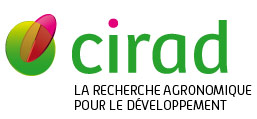Genetic and temperature sex determination in the turbot Scophthalmus maximus
Lebû´gue E., Jeu S., Guennoc M., Guiguen Y., Baroiller J.F., Haffray P.. 2007. Aquaculture, 272suppl.1 : S264. International Symposium on Genetics in Aquaculture. 9, 2006-06-26/2006-06-30, Montpellier (France).
Genetic (GSD) and temperature sex determination (TSD) have been investigated in the turbot, Scophthalmus maximus using sex inversed males (androgen treated males=ATM) and females (oestradiol treated female-s= OTF). ATM and OTF have been produced through feeding treatments using 17[alpha]-methyltestosterone and 17[bûˆta]-oestradiol at a dosage of 3 or 5 mg/kg food starting from 35 days post fertilization (dpf) during periods of 500 or 700ô¯ days. 16 ATM and 6 OTF were mated with normal females or males. The 22 resulting progenies and 11 control families were reared at 17ô¯C. For TSD evaluation, parts of 8 of these 33 families (2 from ATM and 6 from controls) have been reared at 15ô¯C, 17ô¯C or 24ô¯C from 35 dpf to 100 dpf. Then all progenies (GSD and TSD) have been reared at 17ô¯C until 11 months old (100 g body weight) for the sex ratio assessment. For 27 progenies reared at 17ô¯C, sex ratios perfectly fit in with the hypothesis of a male homogamety ZZ/ZW system (X-square test; P<0.01). However, 2 ATM, 2 OTF and 2 control progenies presented skewed sex ratios with an excess of males (65-80%). Finally, 24 C treatments significantly affected 3 out of the 8 progenies evaluated for TSD in decreasing the rate of males. It is concluded that in turbot sex is mainly determined by a pair of sex chromosome with a female heterogamety (ZZ/ZW) but sex ratios may also be modulated by parental factors, high temperature and possible temperature/genotype interactions. This project was partly supported by France Turbot and the EU in the PL 97-3796 FAIR Project.
Documents associûˋs
Article (a-revue û facteur d'impact)
Agents Cirad, auteurs de cette publication :
- Baroiller Jean-FranûÏois — Persyst / UMR ISEM
